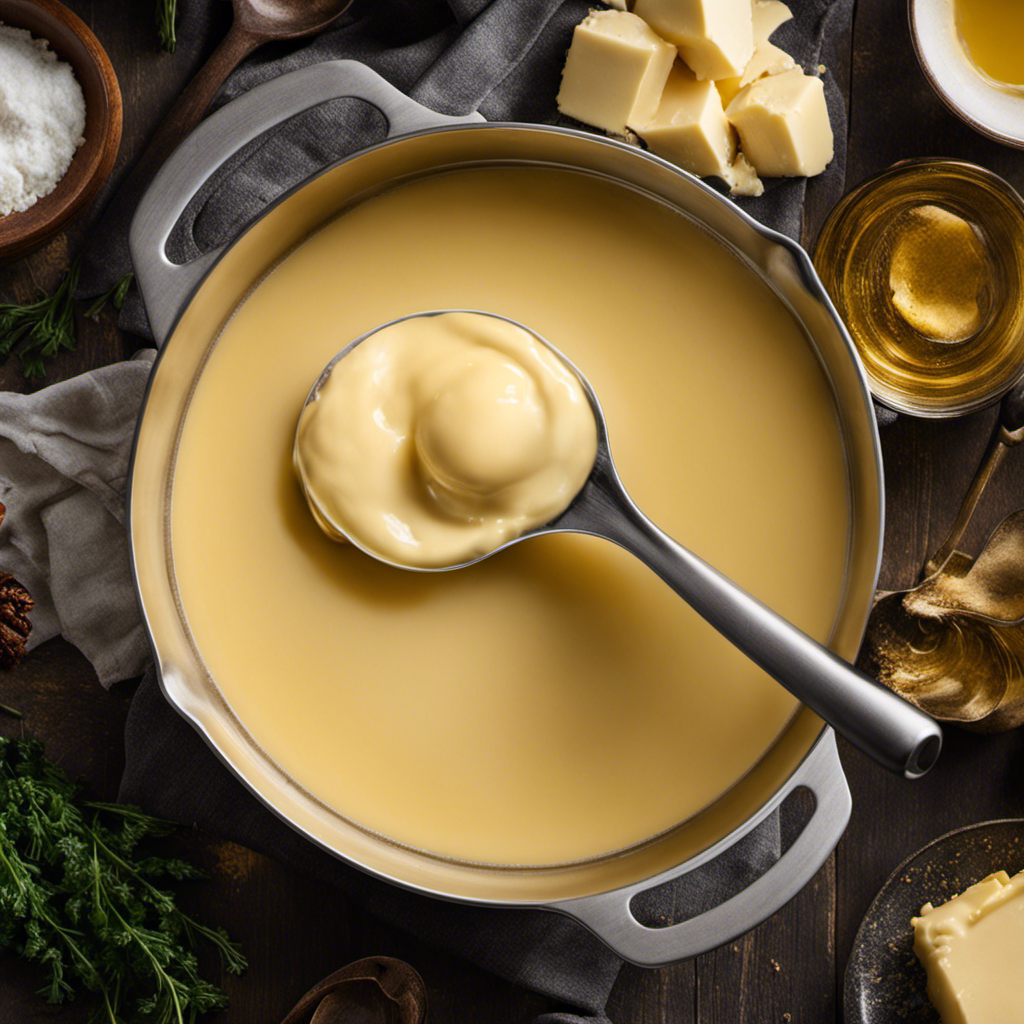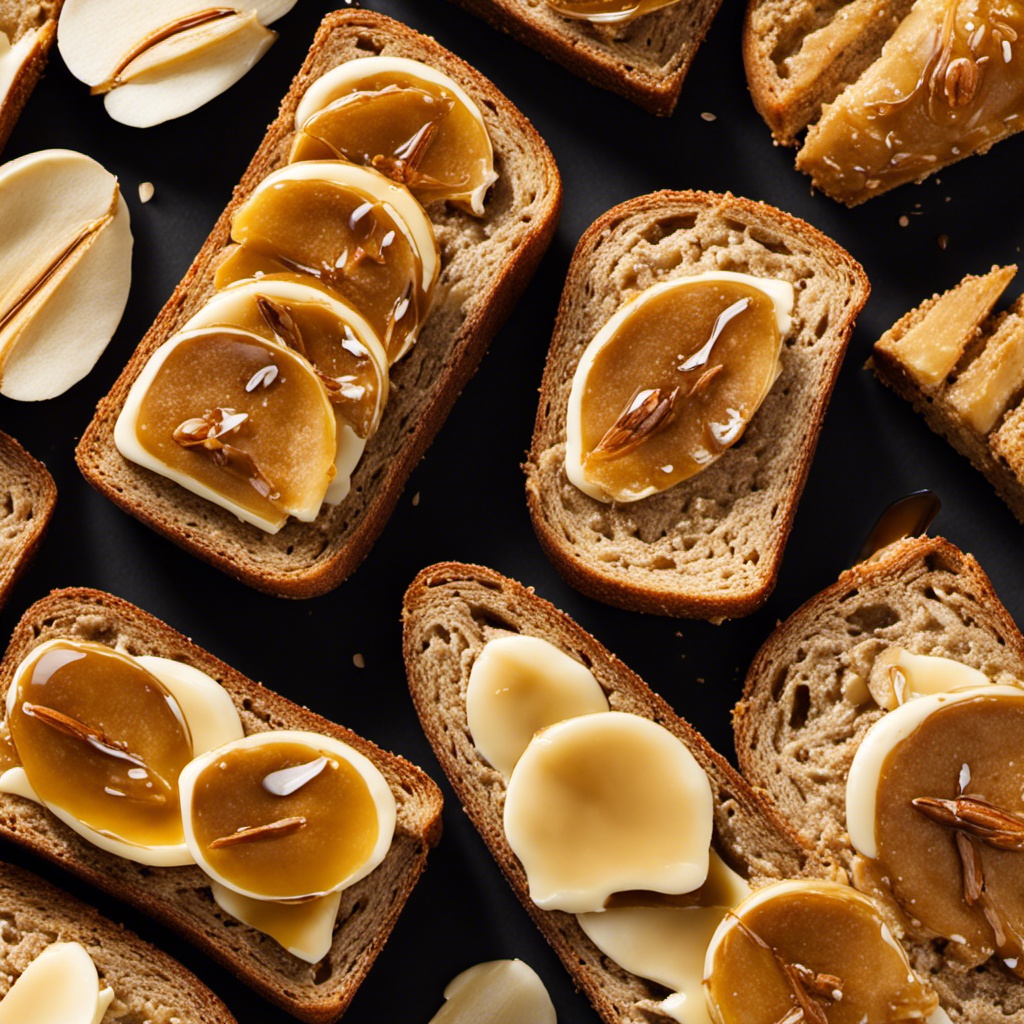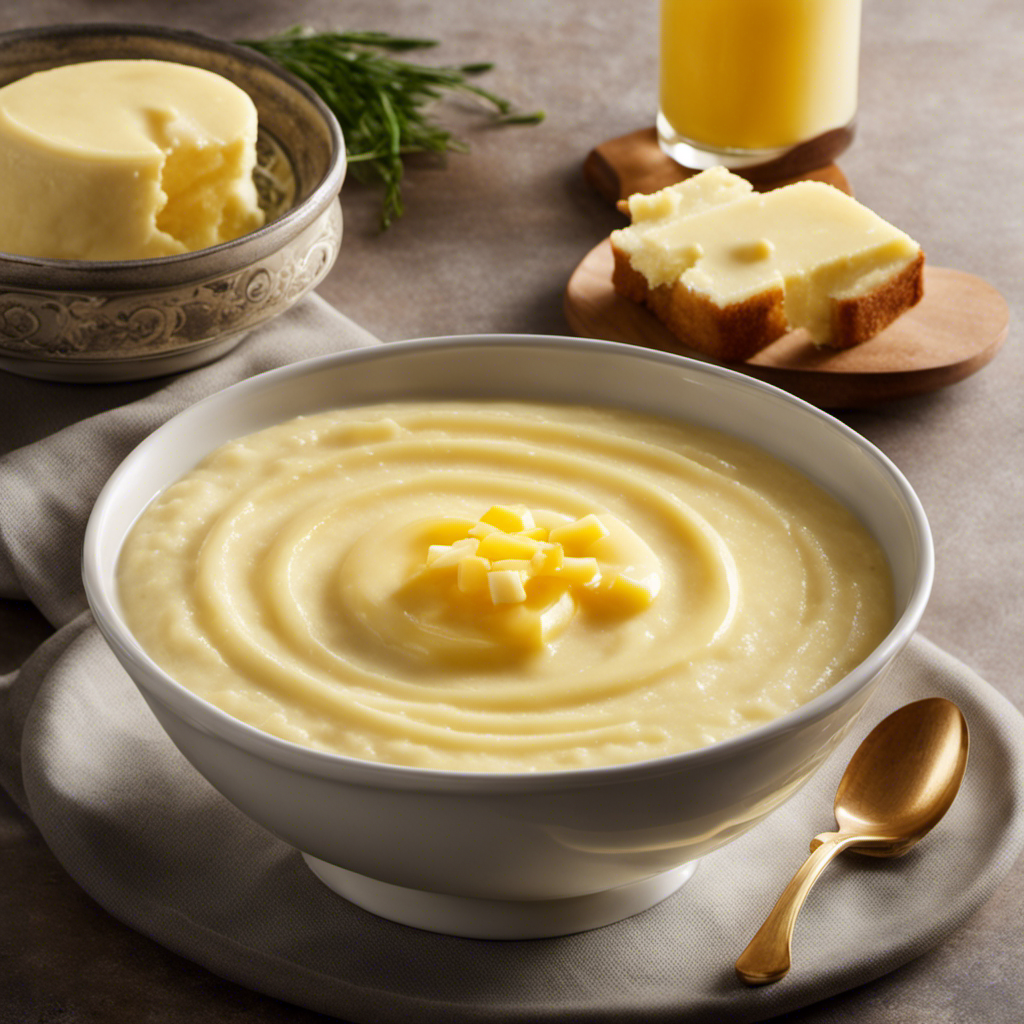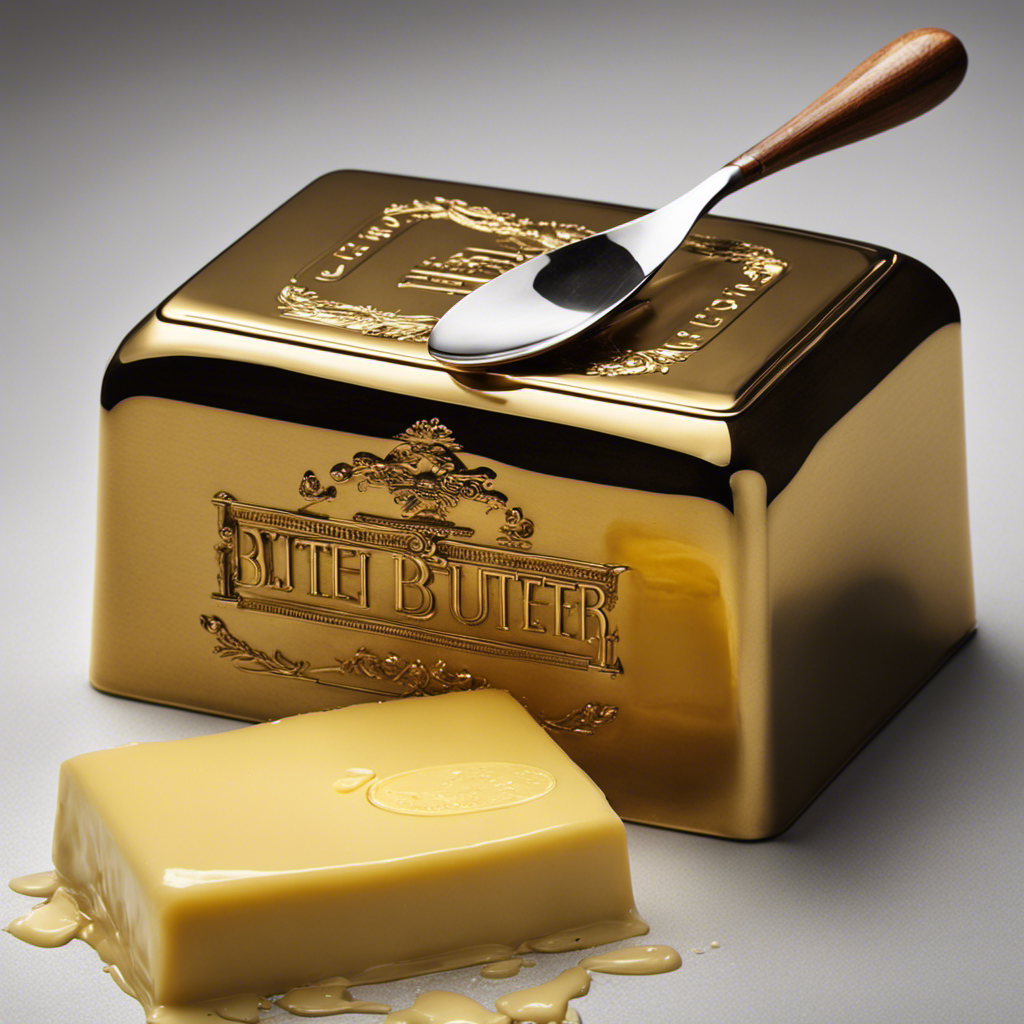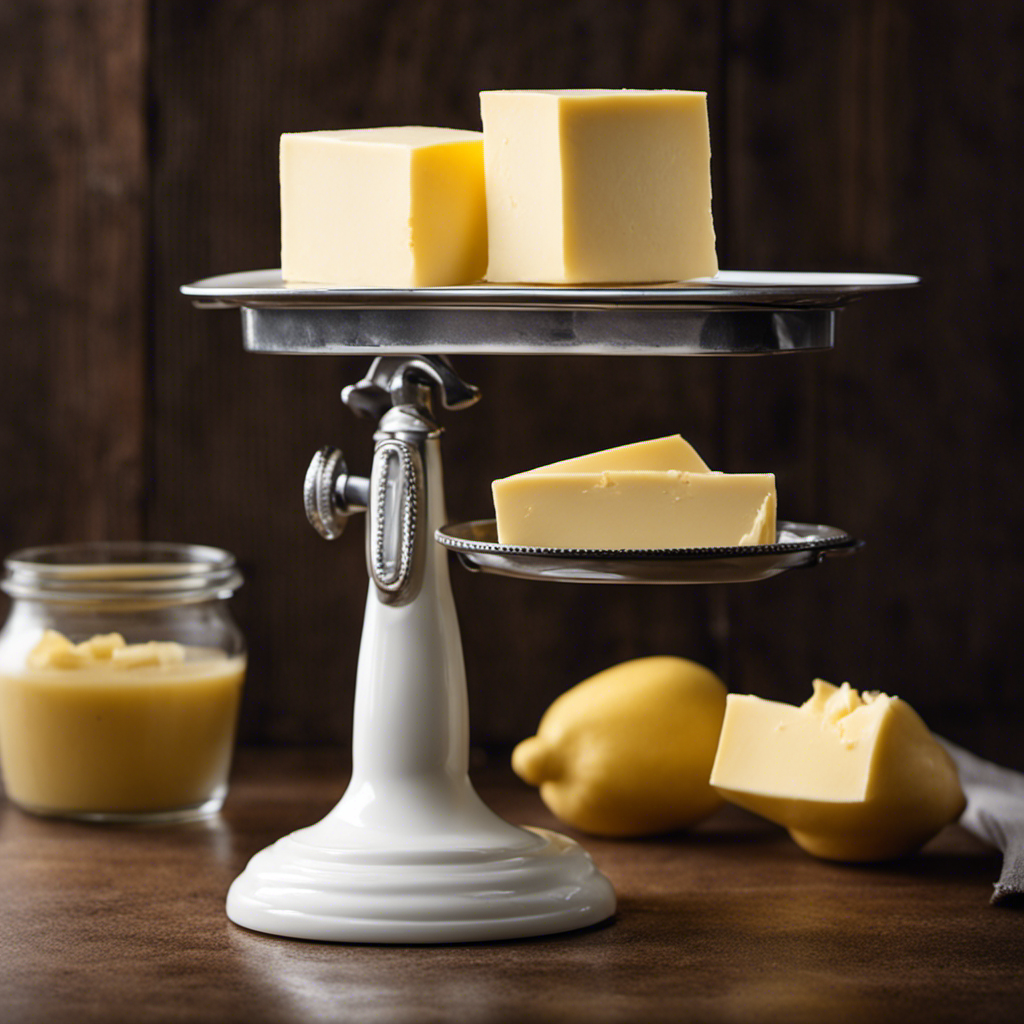Hello there!
So, you know that feeling when you’re making a delicious butter sauce and it turns out a little too thin? Well, fear not! I’ve got some tried and true techniques to help you thicken that sauce up just the way you like it.
From understanding the importance of thickening to common ingredients and handy tips, this article has got you covered.
So grab your apron and let’s dive in, shall we?
Key Takeaways
- Achieving desired consistency is crucial for butter sauce
- Thickening creates a velvety texture that coats the dish
- Proper thickening agents are essential
- Techniques such as whisking or stirring constantly and reducing over low heat are important for achieving a smooth texture
Understanding the Importance of Thickening Butter Sauce
Understanding the importance of thickening butter sauce is crucial in achieving the desired consistency. When making a butter sauce, it is essential to have a thick and velvety texture that coats the dish perfectly. Without proper thickening, the sauce may turn out thin and runny, affecting the overall flavor of the dish.
Thin butter sauce can dilute the flavors and fail to provide the rich and creamy taste that is expected. To avoid this, there are alternative thickening agents that can be used. Common options include flour, cornstarch, or cream. These ingredients help to bind the sauce together and create a smooth and luscious texture.
Common Ingredients for Thickening Butter Sauce
To make a creamy and rich butter sauce, you’ll need a few common ingredients. Here is a list of key components for thickening butter sauce:
- Butter: The foundation of the sauce, providing flavor and richness.
- Flour: A traditional thickening agent that helps give the sauce body.
- Cream: Adds creaminess and enhances the texture of the sauce.
- Egg yolks: A luxurious addition that can contribute to a velvety texture.
- Alternative thickening agents: Cornstarch or arrowroot can be used instead of flour for a gluten-free option.
When incorporating these ingredients into your butter sauce, it’s important to know how to avoid lumps. One way to prevent lumps is by whisking or stirring constantly while adding the thickening agent. Another method is to create a slurry by mixing the thickening agent with a small amount of cold liquid before adding it to the sauce. This helps to evenly distribute the thickener and prevent clumping.
Techniques for Thickening Butter Sauce
One way to achieve a creamy consistency in your butter sauce is by whisking or stirring constantly while adding the thickening agent. This ensures that the thickening agent is evenly distributed throughout the sauce, preventing any lumps from forming. However, there are alternative methods and ingredients you can use to thicken your butter sauce if you don’t have access to the usual thickening agents like flour or cornstarch. For example, you can try using alternative ingredients such as egg yolks or cream cheese, which not only add thickness but also impart a rich flavor to the sauce. Another alternative method is to reduce the sauce by simmering it over low heat until it thickens naturally. This concentrates the flavors and creates a silky texture. Here is a table showcasing some alternative methods and ingredients for thickening butter sauce:
| Method | Ingredient | Result |
|---|---|---|
| Egg yolks | Adds richness | Creamy texture |
| Cream cheese | Tangy flavor | Thick consistency |
| Reduction | Concentrated | Silky texture |
Tips for Achieving the Perfect Consistency in Butter Sauce
If you want a creamy consistency in your sauce, make sure to continuously whisk or stir while adding the thickening agent. This is crucial for achieving a smooth texture and enhancing the flavor of your butter sauce.
Here are some tips to help you achieve the perfect consistency:
- Gradually add the thickening agent, such as flour or cornstarch, to prevent clumping.
- Use a fine-mesh strainer to sift the thickening agent into the sauce for a smoother finish.
- Cook the sauce over low heat to allow the thickening agent to activate and thicken the sauce gradually.
- Avoid boiling the sauce, as this can cause it to become too thick or curdle.
- Taste and adjust the seasoning of the sauce as needed to enhance the overall flavor.
By following these tips, you can ensure a velvety smooth texture and a deliciously enhanced flavor in your butter sauce.
Now let’s move on to troubleshooting any thickening issues you may encounter.
Troubleshooting Thickening Issues in Butter Sauce
When troubleshooting thickening issues, it’s important to check the temperature of the sauce and adjust accordingly. The temperature plays a crucial role in achieving the desired consistency of your butter sauce.
If the sauce is too hot, it can lead to a lumpy texture, which is not what we want. To fix this issue, simply reduce the heat and whisk vigorously until the lumps disappear.
If the sauce is too cold, it may not thicken properly. In this case, gently warm it up over low heat while stirring constantly.
If you’re looking for alternative thickening agents, consider using cornstarch or arrowroot powder. These ingredients can be mixed with water or broth before adding them to the sauce. They work well to thicken the sauce without altering its flavor.
Frequently Asked Questions
Can I Use Margarine Instead of Butter to Thicken the Sauce?
Yes, you can use margarine as a substitute for butter to thicken the sauce. However, keep in mind that different types of fats can have varying effects on the texture and taste of the sauce.
What Are Some Alternative Thickeners for Butter Sauce Other Than Flour or Cornstarch?
There are alternative thickeners for butter sauce besides flour or cornstarch. Some options include arrowroot, potato starch, or tapioca starch. Each has its pros and cons, so it’s important to consider the desired texture and flavor of the sauce.
Can I Use a Different Type of Milk, Such as Almond or Soy Milk, to Thicken the Sauce?
Using non-dairy milk alternatives like almond or soy milk to thicken butter sauce is possible, but it may alter the taste and texture. Pros include accommodating dietary restrictions, but cons include potential flavor changes.
How Long Does It Take for the Sauce to Thicken After Adding the Thickening Agent?
To tell if the sauce is thick enough, I check its consistency by running a spoon through it. If it leaves a trail, it’s perfect. To prevent it from becoming too thick, I add more liquid gradually.
Can I Reheat the Sauce if It Becomes Too Thick?
Yes, you can reheat the sauce if it becomes too thick. To adjust the consistency, heat it gently and gradually add a bit of liquid or more butter while stirring until desired thickness is achieved.
Conclusion
In conclusion, mastering the art of thickening butter sauce is essential for any aspiring chef.
By understanding the importance of consistency and utilizing common ingredients like flour or cornstarch, you can achieve the perfect velvety texture.
Techniques such as reducing or emulsifying can also be employed to enhance the thickness.
Remember, practice makes perfect, so don’t be discouraged if you encounter some troubleshooting along the way.
Just like a sculptor molding clay, with patience and perseverance, you’ll soon create butter sauce that’s as smooth as silk.
